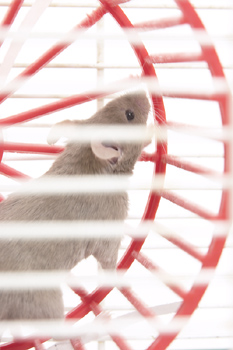May 5 2005
 An investigation into outbreaks of salmonella poisoning by the Centers for Disease Control and Prevention (CDC) has prompted U.S. health officials to warn the public to take care when handling mice, rats and hamsters after human cases of salmonella have been linked to pet rodents.
An investigation into outbreaks of salmonella poisoning by the Centers for Disease Control and Prevention (CDC) has prompted U.S. health officials to warn the public to take care when handling mice, rats and hamsters after human cases of salmonella have been linked to pet rodents.
Salmonella poisoning usually occurs as a result of eating contaminated food, such as eggs or meat, but a number of cases were reported in people infected through contact with animals, usually snakes or turtles and now pet chicks, ducklings, kittens and hedgehogs have also been linked to human outbreaks.
Now according to the CDC rodents have joined the list. The agency said on Thursday that 15 people in 10 states had contracted Salmonella Typhimurium in 2003 and 2004 after direct exposure to various types of rodents purchased from pet stores.
Salmonella Typhimurium is a strain of the bacteria that is resistant to some antibiotics and causes abdominal cramping, diarrhoea and high fever. About half of those recently infected by the pet rodents were hospitalized.
The CDC recommends that people keeping rodents as pets wash their hands after handling these animals or their cages and holding containers.
Dr. Stephen Swanson, a CDC epidemiologist who helped investigate the outbreaks, said parents should monitor their children's exposure to rodents and other such pets and ensure they wash their hands after contact.
According to the CDC, 8 of the 15 cases in its report were children 16 or younger. A 5-year-old boy from Minnesota, was found to have frequently handled and kissed a pet mouse that was visibly ill.
Swanson says that like reptiles and other species, rats, mice and hamsters can carry salmonella in their intestinal tracts and shed the bacteria in their faces. They may not have diarrhoea or other signs of the infection to pose a threat to humans and it is possible that some of these animals can shed the bacteria while still appearing well.
The CDC report comes at a time of amid heightened concern about diseases spread by exotic and wild animals as well as livestock. In 2003, the United States reported the first outbreak of human monkeypox infection in the Western hemisphere.
Close contact with infected prairie dogs was found to be the cause of most of the infections. Last year, a 3-year-old Colorado boy contracted tularemia, a potentially fatal infection, after being bitten by a pet hamster.